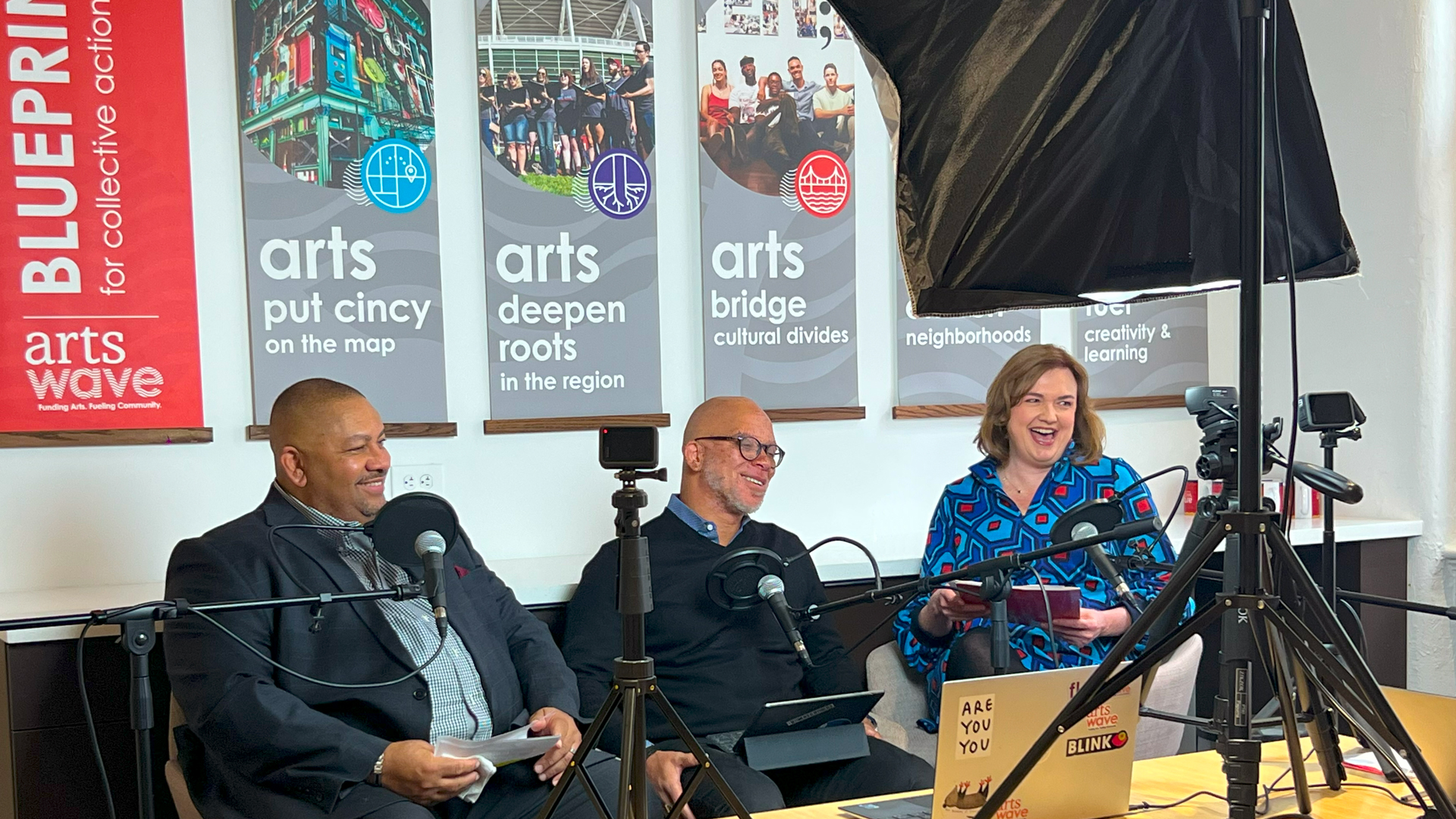posted by Alecia Kintner ON
Jul 11, 2023

(L to R) Harold Brown, Tyson Betts and Alecia Kintner on ArtsWrap with Alecia
Hear the full discussion with Harold Brown and Tyson Betts on episode ten of ArtsWrap with Alecia, available wherever you get your podcasts.
"How do we attract the diverse audience of tomorrow?" The question has taken on urgency post-COVID because, according to a 2022 WolfBrown survey, traditional arts attendees' habits have changed with 15-20% unlikely to return. Rather than seeing this as a negative, Cincinnati's arts leaders are seeing an opportunity to use DEIA thinking to build audiences that better reflect the region and, most importantly, connect with them over the long haul.
"A lot of times in DE&I work, we focus on the 'D' and not the 'I.'" says Harold Brown, the Honorable Nathaniel R. Jones Chief Diversity and Inclusion Officer for the Cincinnati Symphony Orchestra (CSO), adding "We are thinking about how people experience the CSO, so our diversity efforts will pay off." Doing this can be a delicate dance, however, because a symphony cannot stop playing the classics simply because different music resonates with new audiences. Brown is well aware of the challenge: "It's not doing away with what's made us great, it's expanding that to include folks who traditionally have not found the symphony to be a destination. We had a Bernstein and Beethoven program last year, but in between, we had a piece by William Dawson, a lesser-known African American composer. Not only did that draw a more diverse audience, but it also exposed the majority audience to something new to them."
Tyson Betts, Design Vice President for Global Family Care at P&G, is exploring "I" and "D" through his unique position in business and the arts. "Just as we adapt our strategies, content and product [at P&G] to meet the evolving needs of the consumer, the arts need to do the same." He's a founding member of Flow, An African American Arts Experience, a performance series created to do just that.
"Flow curates experiences that help people from Black and Brown communities see artists that may be more resonant with them," says Betts. This is important because, as Betts notes "...we are all more comfortable in familiar environments. But, as we pull more diverse people together to enjoy the same thing, it sparks connection." Essentially, leaning on inclusion to diversify audiences.
Listening, responding and changing to meet the needs of tomorrow's audience is an ongoing process. But it's through that effort that Cincinnati's arts organizations are broadening their audiences while deepening their connections with the community.